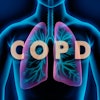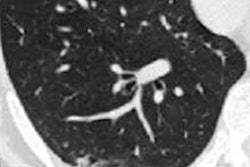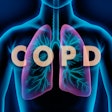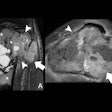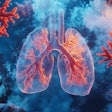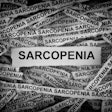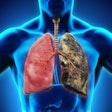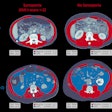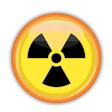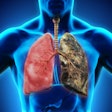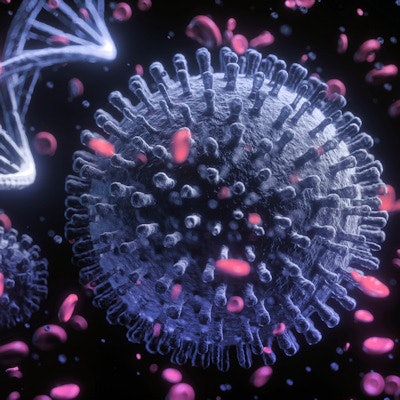
A machine-learning algorithm based on CT radiomics can help clinicians predict the severity of COVID-19 disease and patient outcomes, according to research presented at the recent virtual RSNA 2020 meeting.
Dr. Fatemeh Homayounieh of Massachusetts General Hospital in Boston lead a team that conducted a study consisting of 92 patients with positive reverse transcription polymerase chain reaction (RT-PCR) tests for COVID-19 who underwent noncontrast chest CT scans. Two radiologist readers read the exams, noting opacity type (i.e., ground-glass, consolidation, nodular pattern), distribution, and the scope of lung involvement using a scale of 0 to 5, with 5 equal to more than 75% involvement of lung opacities.
The researchers also tracked the following data: symptom duration before admission to the hospital (i.e., fever, cough, sore throat, chest pain, headache); length of hospital admission; presence of comorbidities (i.e., diabetes, heart disease, hypertension, kidney disease); laboratory results; and whether patients were discharged, died, or were under treatment.
They created a machine-learning algorithm using whole-lung radiomics by segmenting lung volumes on thin-section DICOM images and analyzed the performance of the algorithm using the area under the receiver operating curve (AUC) measure.
Radiomic features that were incorporated into the algorithm included the following:
- First-order statistics (18)
- Shape-based (13)
- Gray level co-occurrence matrix (23)
- Gray level run length matrix (16)
- Gray level size zone matrix (16)
- Neighboring gray tone difference matrix (5)
- Gray level dependence matrix (14)
The investigators found that CT radiomics performed better than clinical variables for predicting the extent of lung opacities related to COVID-19 pneumonia and was able to predict the type of lung opacities, while clinical or laboratory data did not. They also found that the ability of CT radiomics to predict patient outcomes improved when clinical variables such as patient age and duration of symptoms before hospital admission were included.
| AUC for clinical variables assessing COVID-19 compared with CT radiomics algorithm | |||
| Clinical variables alone | Radiomics | Radiomics plus clinical variables | |
| Extent of lung opacities (clinical variables = blood oxygen level at hospital admission and lymphocyte count) | 0.89 | 0.99 | 0.99 |
| Type of lung opacities (clinical variables = blood oxygen level at hospital admission and lymphocyte count) | Not significant | 0.77 | No improvement over radiomics alone |
| Patient outcome (clinical variables = oxygen saturation on hospital arrival plus days of presenting symptoms before admission plus platelet count and age) | 0.81 | 0.85 | 0.90 |
Whole-lung radiomics from noncontrast chest CT can help clinicians better predict COVID-19 disease severity and outcomes, while clinical variables alone were not as effective for these tasks, Homayounieh concluded.
"[CT radiomics] could improve COVID-19 patient management at hospital admission," she said.

